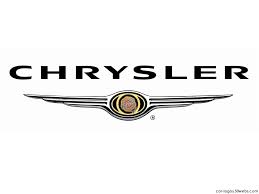Voyager V6-3.0L VIN 3 (2000)

Refrigerant: Service Precautions
R-134a - R-12
Because R-134a refrigerant is a hydrofluorocarbon (HFC) which contains hydrogen atoms in place of chlorine atoms, it will not cause damage to the
ozone layer.
Ozone filters out harmful radiation from the sun. To assist in protecting the ozone layer, Chrysler Corporation recommends an R-134a refrigerant
recycling device.
The Clean Air Act Amendment of 1990 requires that Freon be recovered when accessing the air conditioning circuit and that technicians hold a
refrigerant recovery and handling certification.
The Ozone Layer
A thin layer of ozone molecules, located 10 to 30 miles above the earth, form a protective cover by absorbing a portion of the ultraviolet (UV) radiation
emitted from the Sun.
Ozone Depletion
Scientific research performed over the past 15 years links the release of chlorofluorocarbons (CFC)s, also know by the trade name Freon) into the
atmosphere to ozone depletion. When CFCs are released into the atmosphere, they eventually reach the ozone layer located in the stratosphere where
they react with and destroy ozone molecules.
Harmful Effects
Ozone depletion and the corresponding increase in UV radiation has been shown to lead to higher incidents of cancer as well as global warming. When
viewed from a global perspective, ozone depletion holds an enormous potential for damage.
Upper Level vs. Ground Level Ozone
Confusion often arises when we hear about the necessity of the ozone layer and ground level ozone. The ozone layer existing high above the earth is
beneficial but the same compound, when located at ground level, is harmful to humans, animals, crops and vegetation.
Ground level ozone is a component of smog and forms when hydrocarbons (HC) react with nitrogen oxides (NOx) in the presence of sunlight and heat.
Montreal Protocol
In response to the growing body of evidence demonstrating the detrimental effects of (CFC)s, 24 countries and the European community met in
Montreal, Canada, in 1987 to establish standards for the control of (CFC)s. Since that time, a total of 132 countries have become signatories to this
agreement leading to an end of production of R12 in December, 1995, in all developed countries.
As established by the Montreal Protocol, R12 production in developed countries has ceased.
Clean Air Act
The United States Congress, acting in response to the Montreal Protocol, banned production of (CFC)s by the year 2000. Congress also amended the
Clean Air Act in an effort to control both the production and use of (CFC)s for refrigerant applications including mobile vehicle air conditioning
systems.
Technician Certification
Organizations providing technician refrigerant recovery and recycling certification include:
National Institute for Automotive Service Excellence (ASE)
13505 Dulles Technology Drive, Suite 2
Herndon, VA 22071-3421
Phone: (703) 713-3800
Fax: (703) 713-0727
http://www.asecert.org/
International Mobile Air Conditioning Association (IMACA)
P.O. Box 9000
Fort Worth, TX 76147-2000
Phone: (817) 338-1100
Fax: (817) 338-1451
Mobile Air Conditioning Society (MACS) Worldwide
P.O. Box 100
East Greenville, PA 18041
Phone: 215-679-2220
Fax: 215-541-4635
